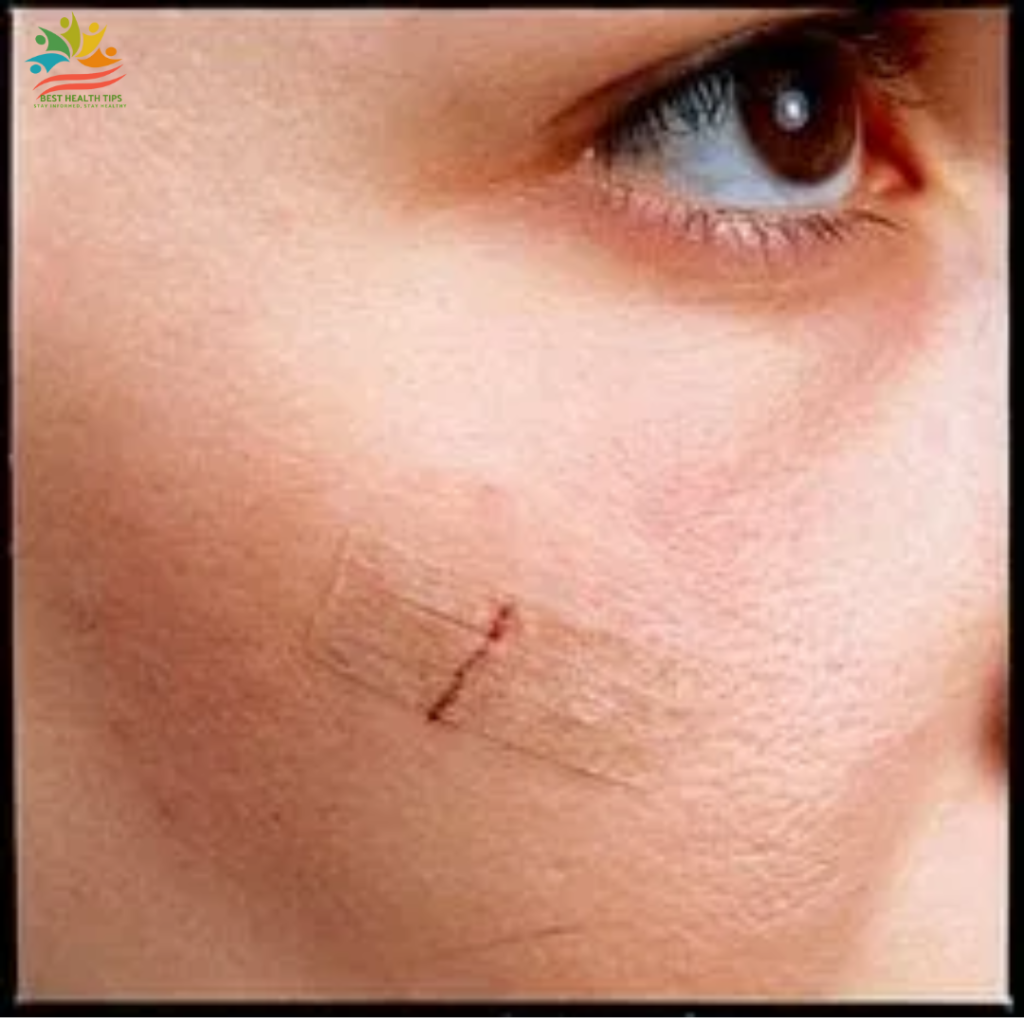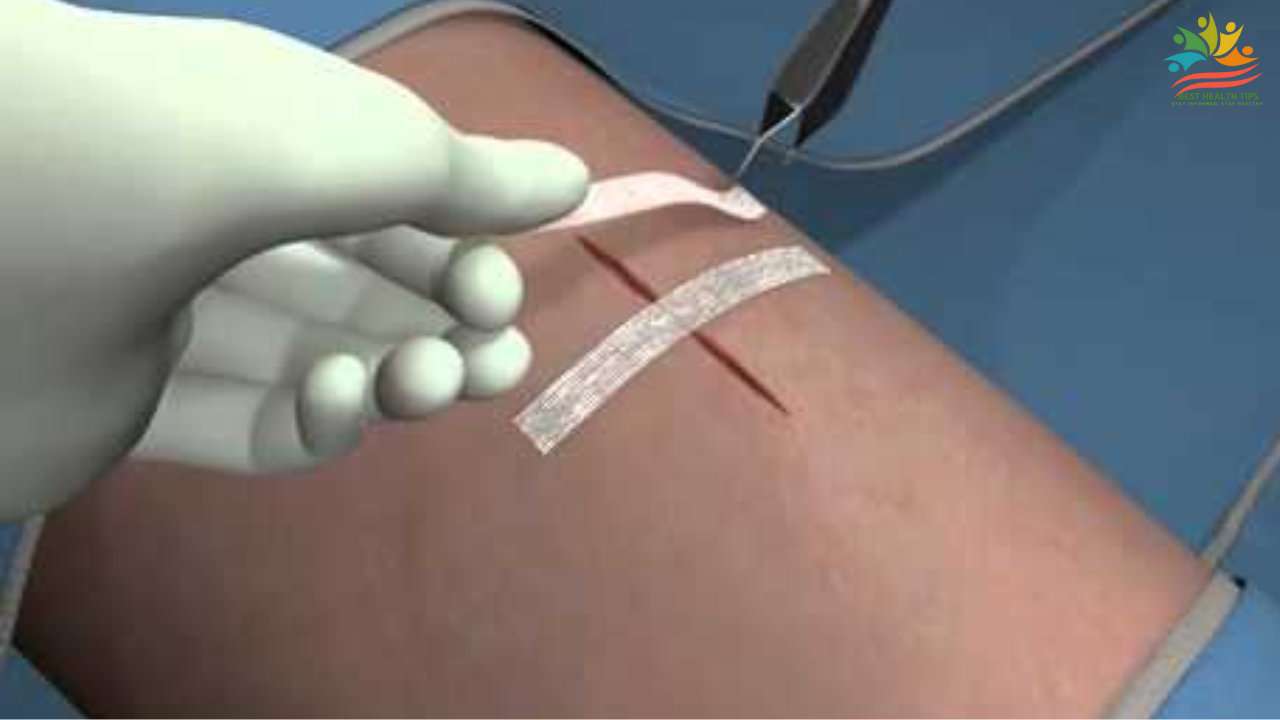Introduction
skin tears steri strips the causes of tears in the skin have been more frequent than one actually thinks, plus good news will be added at the end without suturing one will have this done, simply with the use of steri strips.
What are skin tears?
Compare your skin to a thin, delicate piece of fabric. Fabric can tear when pulled too far. Analogously, your skin can tear where the sudden force or trauma tears it apart. Most tears of the skin occur when the epidermis separates from the dermis as a flap. These are some of the most common injuries with the elderly, as their skin is fragile from ageit’s like tissue paper compared to regular paper. These can occur due to bumping into furniture or peeling adhesive bandages off too fast.
Understanding Steri Strips
Do you remember those strips of paper that you use to create various craft projects? Steri strips are sort of the same thing, but only they’re those special medical strips that help hold edges of a wound together; they are much like those small bridges that reunite separated skin.
How Steri Strips Work
These small strips are so smart in that they function by using a strong, medicalgrade adhesive to hold wound edges in alignment. Envision them as nature’s assistantsthey will hold everything in place while your body is working its miracle underneath.
Benefits of Using Steri Strips
Why would you prefer steri strips over standard stitches? For starters, they’re the wound care equivalent of a friendly neighborhood: less obtrusive, easier to work with, and less painful to begin with. They cause much less scarring, let the wound breathe a little, and require no followup visit to have them removed.
When to Apply Steri Strips
Not all wounds should be treated with steri strips. You should apply them for
- Clean, straight cuts not too deep
- Cuts with edges that lie together
- Cuts in relatively fixed areas
Types of Wounds That Can Be Sutured Using Steri Strips
Imagine your skin as a piece of paper. Steri strips are best applied when the “tear” is clean and straight, jagged or complicated. Steri strips work so well on superficial cuts and minor surgical incisions.
When Not to Use Steri Strips
Steri strips won’t be as effective as using, say, a BandAid for a broken bone. Steri strips do not go well on deep wounds that need to be sutured; infected tissues are inappropriate; they’re not the best on highly mobile portions of the body like the joints; and they shouldn’t be applied where there are ragged edges.

Proper Application Technique
Getting the application right is very importantit is like laying the foundation of a house. And getting it wrong may jeopardize the whole healing process.
StepbyStep Application Guide
1. Clean wound area with mild soap or water
2. Dry surrounding skin completely
3. Bring edges of the wound together
4. Place strips perpendicular to the wound
5. Allow small spaces between strips for drainage
Common Application Mistakes
You know how putting a puzzle together wrong means the picture won’t look right? The same goes for steri strips. Common mistakes include:
- Applied parallel to the wound
- Applying to wet skin
- Stretched too tight
- Too few or too many strips
Why not Steri-Strips in skin tears?
Steri-Strips should not be used over all the events of managing skin tears. Here’s why:
Deep Skin tears: Steri-Strips may fail to close the wound completely in Type 3, full-thickness skin tears. Such a lesion could need stitches, staples, or professional medical aid.
Dirty Wounds: Wounds that are contaminated and infected should not be stripped with Steri-Strips. In such wounds, Steri-Strips tend to trap bacteria inside the wound and create complications related to infection.
Porous Skin: Very fragile skin or very senile skin which cannot resist the stick well and thus gets injured either during strip placement or strip removal.
Heavy Bleeding: Steri-Strips should not be applied to heavybleeding wounds; if so, it requires a substantially dry surface, and isn’t easy enough for them.
Aftercare and Maintenance
Care for your steri strips is much like caring for a gardenattention and the right conditions will help them thrive.
Keeping the Area Clean
The trick is to keep the area clean without disturbing the strips. It’s like washing around a sleeping cat: you want to clean the area without disturbing what’s at rest.
When to Replace Steri Strips
Generally, steri strips should stay in place for 57 days. However, if they start to curl up at the edges, like a dogeared book page, they may need replacement sooner.
History Table: Almonds and Skincare Evolution
| Year | Milestone |
| Ancient | Almond oil used in Ayurvedic and Chinese medicine for skin nourishment and healing. |
| 16th c. | Almond paste becomes a staple in European beauty treatments for its brightening properties. |
| 1900s | Cold-pressed almond oil gains popularity in Western skincare for hydration and anti-aging effects. |
| 2000s | Research highlights the antioxidant benefits of almond oil and extracts for skin repair. |
| Present | Almond-based products, from scrubs to serums, dominate skincare, emphasizing natural, glowing skin. |
FAQ’s
Can I shower with steri strips?
Yes, but do not apply direct water pressure and pat the area dry gently.
What if my steri strips fall off too soon?
If it is within the first few days, clean the area and apply new strips. If the wound has begun healing, seek a doctor.
Am I going to be active with steri strips?
Yes, most patients resume their regular activities but avoid exercises that cause tugging at the site or excessive perspiring over the site.
Read more about beauty&skincare and other categories at Best Health Tipss.


